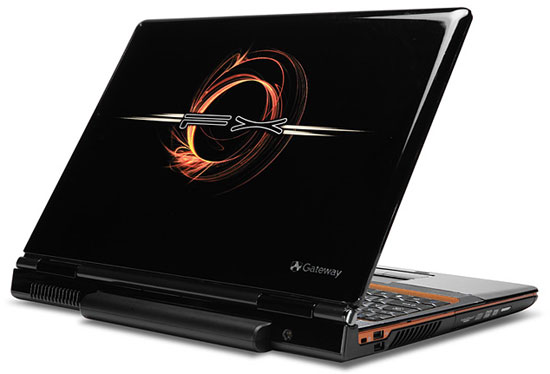Mobile Buyers' Guide, December 2009
by Jarred Walton on December 6, 2009 12:00 AM EST- Posted in
- Guides
Midrange $850 to $1150 Laptops
The higher end of the midrange spectrum starts to blend into the high-end market, so we're going to break the Midrange segment into two pieces. We'll start with the less expensive midrange options first. Many of these are merely upgraded versions of the last category - for example, take the Dell Studio 14z and add a P8700 CPU, an SSD, or a 4GB SO-DIMM (5GB total RAM). There's absolutely nothing wrong with such a system, though you do want to weigh the benefits of upgrades against their cost.
Entry Level Gaming
All of the laptops so far qualify as barely capable gaming solutions, at least compared to what you can get elsewhere. With up to $1100 to spend, getting a viable gaming GPU becomes a lot easier. We would recommend trying to keep CPU speed at 2.4GHz for AMD CPUs or 2.26GHz for Intel to avoid bottlenecks on the processor side of the equation, but for most games the GPU is a far bigger concern.
ATI's Radeon HD 4650 and NVIDIA's GeForce GTS 250M are similar in terms of gaming performance (we'd give the edge to NVIDIA, particularly with their mobile driver program), and while they pale in comparison to current desktop solutions like the HD 5850, they can run all current games at reasonable frame rates with some tweaking of the graphics settings. You can also find faster GPUs like the GeForce 9800M for around $1000. Just don't expect great battery life from anything sporting such a fast GPU - two to three hours is the most you're likely to get.
We looked at the MSI GT627 earlier this year, and for the price it's still interesting but it belongs in the next bracket. We really didn't care for the keyboard, though, and we haven't been able to test the other updated MSI gaming laptops to see if they're better. If you can test one in person or are willing to live with a "springy" keyboard, the MSI GT gaming laptops are certainly worth a look. We've looked at Toshiba's X305 as well, and for $1000 that would be our pick for a decent gaming laptop (provided you're okay with the size).

Gateway's P-7908u FX is another option, building on the past success of the FX line. It has similar components to the Toshiba mentioned above, but it upgrades the GPU to the GTX 260M, which is about 25% faster than the 9800M GTS on average, and it comes with a 500GB HDD for the extra $150. Both are more than capable of running current games, and 1440x900 LCDs fit well with these faster mobile GPUs.










49 Comments
View All Comments
notanakin - Monday, December 7, 2009 - link
Sorry - here's the link: http://pzportal.net/main/2009/11/notebooks-price-l...">http://pzportal.net/main/2009/11/notebooks-price-l...Roland00 - Sunday, December 6, 2009 - link
I seconded this, I just bought the dual core su2300 model, and have no complaints so far about it besides the horrible viewing vertical angles due to the tn panel and glossy.I am very surprised on how fast the processor is for normal every day tasks. It isn't my overclocked I7 but for most everyday tasks you wouldn't care about the difference. This is what my opinon the netbook experience was supposed to be, save the atoms for things such as cell phones, gps, blu ray players etc.
ImSpartacus - Sunday, December 6, 2009 - link
I tried my best to goad my parents into getting my little sister a 1410 for her first laptop back when the SU2300 model was $399 (free shipping) on Newegg. They didn't want to buy it early.Then it ballooned to $409 (no free shipping) and they felt cheated.
They ended up getting a bare-bones SL410 for it's ruggedness.
AgeOfPanic - Sunday, December 6, 2009 - link
It ballooned by 10 dollars? 10 Dollars is not ballooning, it's 10 dollars.bennyg - Sunday, December 6, 2009 - link
Shipping.Just to compound your useless comment with another.
GoodRevrnd - Sunday, December 6, 2009 - link
I have much interest in the 1410 and am thinking it might be a good replacement laptop for my g/f. It is ridiculous what you get in this thing considering what I paid for my Vaio Z a year ago (granted the screen on it is to die for).KikassAssassin - Sunday, December 6, 2009 - link
I'm curious about your statement that "(it takes about three seconds to turn off the discrete GPU and 15 seconds to turn it back on)" on the UL80Vt, because that hasn't been my experience at all. My UL80Vt takes the same amount of time to switch from the Intel to the nVidia GPU as it does to switch from the nVidia to the Intel GPU: About three to four seconds, both ways.The only time I've had it take longer is if I have a 3D game running when I try to switch graphics modes, in which case it forces me to close the game before it'll switch.
JarredWalton - Sunday, December 6, 2009 - link
Well, I can't even verify the time right now, since after updating the Intel and NVIDIA drivers I can't get the Hybrid GPU feature to work. Need to fix that and then I'll confirm, but I know that it took significantly longer to enable G210M at least the few times where I paid attention. I'll confirm when I get the driver situation sorted out. :)feelingshorter - Sunday, December 6, 2009 - link
Try doing the test with all programs closed since i suspect that your running the flash 10.1 with GPU support, or even programs like the Zune software uses GPU acceleration. These little things might affect it. Maybe even having Win7 Aero on/off might make a difference. Looking forward to the full review of UL80Vt.Now back to studying exams at 4:10 AM...